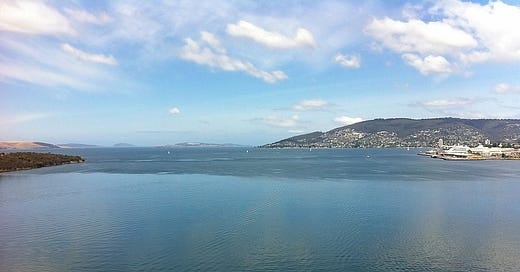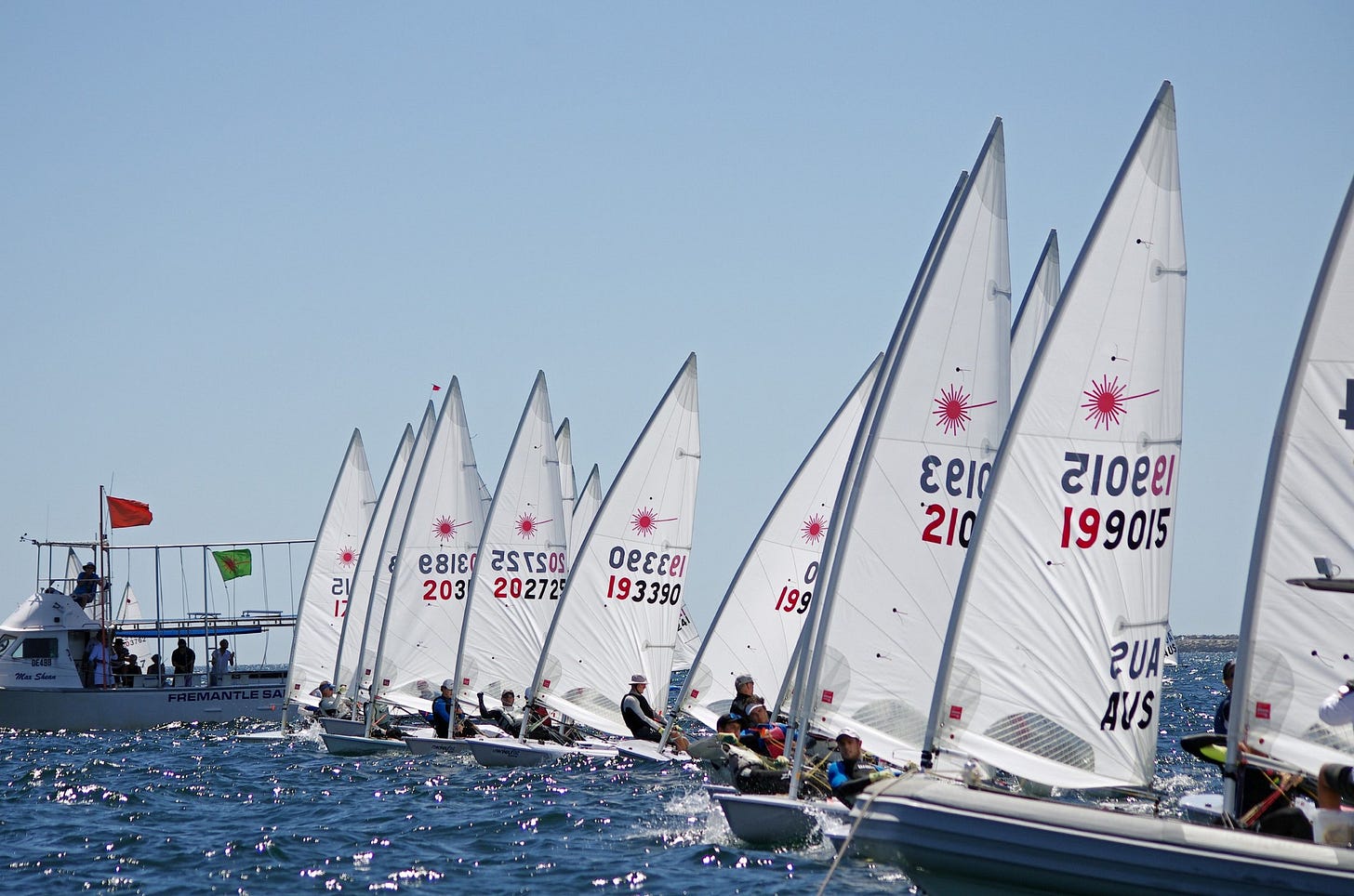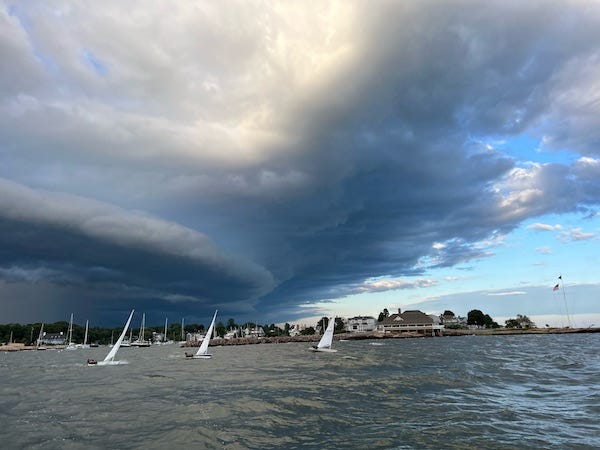Following on from the first two posts in this series, we’re now going to break down “Category II” conditions, or when one side of the course is clearly better than the other.
We all know instinctively that we should get to the favoured side. But that's not what I'm here to tell you.
The most important skill is being able to recognize when one side is favored in the first place. These situations don't happen every day, but when they do, you want to spot them quickly and act decisively.
How to Spot a Favoured Side
Several factors can make one side of the course better than the other:
A building sea breeze
Land close to one side of the course
Differences in current
Light Winds
Better pressure on one side
Differences in wave size
In my opinion, it’s not just about noticing these factors, but understanding why they make one side better. This understanding helps you test your idea before racing starts.
Good strategy comes from collecting information and constantly checking if your idea holds true on the water.
Actionable Tip: Grab a friend and do multiple “split tack” tests before racing. Start with a rabbit start (where one of you closely ducks the other) and sail for 3-5 minutes to opposite sides of the course. Then tack and sail back to the middle. When you and your buddy meet up in the middle of the course, see who came out ahead (and by how much). This gives you real data about which side is working better.
Clues That One Side Might Be Favoured
Look for these signs to help you identify Category II conditions:
Development of a sea breeze (sea breeze clouds), artificial wind shoreline
Dying wind - new weather system approaching, thermal breeze dying
Compass numbers consistently moving to one direction when sailing upwind
Other fleets consistently on one tack or side
What I would suggest is, if you think one side of the course might be favoured, think of reasons why and then use your time before racing to test that idea. As you test the idea, you’ll get a better understanding of what type of conditions you can expect in racing.
Actionable Tip (I know, two in one article!): Check the wind in the morning, and use the Seabreeze “Quadrants” theory to predict if you might get a sea breeze during the day.
How to Sail in Category II Conditions
Once you've confirmed that one side is actually favored, your strategy becomes simpler. You want to maximize your advantage on that favored side. Here are the key principles:
Get there quickly. The sooner you reach the favored side, the more you'll gain over boats that don't.
Get there no matter what. Sometimes you'll need to sail through bad shifts or dirty air to reach the favored side. It's usually worth it.
Protect your position. Don't let your main competitors get further to the favored side than you.
Don't fear the layline. Unlike in oscillating winds (Category I), getting to the layline early on the favored side is often beneficial.
Category II conditions require confidence in your strategy and commitment to following through. You need to be certain about your choice and stick with it.
In next week's post, we'll tackle the trickiest situation of all: how to sail strategically when you're not sure what the right choice is. Stay tuned.






